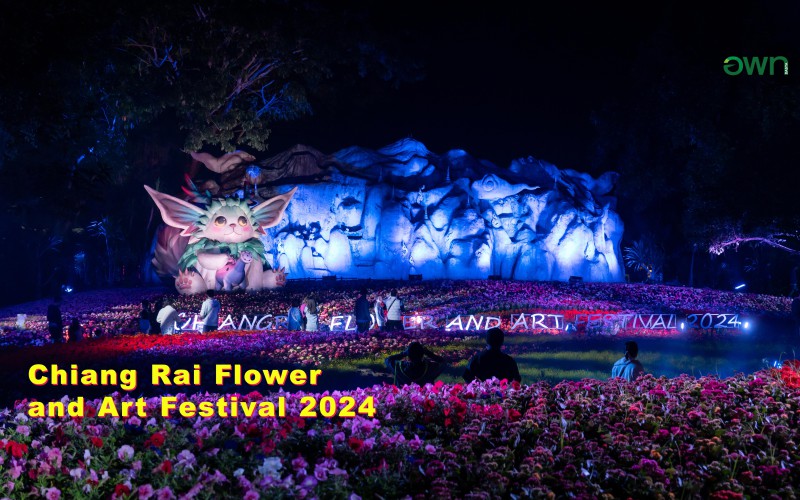DASTA Raises Tourist Attractions to International Standards
DASTA introduces four dimensions for organizational development – “management, socioeconomics, culture, and environment.” These four dimensions are used to develop the Green Destinations Foundation.

Group Captain Attikul Kongmee, Director General of the Designated Areas for Sustainable Tourism Administration (Public Organization), plans to elevate tourist attractions to meet international standards via the knowledge accumulated by DASTA. An example includes developing local tourist attractions in Thailand to meet standards of the Global Sustainable Tourism Criteria (GSTC), established by the Global Sustainable Tourism Council (GSTC).

Group Captain Attikul Kongmee
DASTA developed Thailand’s tourist destinations to eventually receive the “Sustainable Destinations Top 100” award, which is based on the 30 foundations of Green Destinations. The development committee assessed each model tourist destination according to the criteria of GSTC, which receives international recognition.
GTSC is a standard of the Global Sustainable Tourism Council used by DASTA to develop Thailand’s tourist destinations. GTSC conducts assessments based on four criteria, or dimensions. The first dimension pertains to management, which includes ensuring the safety of tourists and planning. The second dimension assesses socioeconomics. The third and fourth dimensions are culture and environment, respectively. These four dimensions are assessed with 41 questions and 105 indicators. DASTA applies these questions and indicators to evaluate the communities under its developmental jurisdiction – generating four colors to symbolize the current status of those areas. The color red indicates a high need for development, followed by pink, yellow, and green. The objective of DASTA is to develop its communities to be in the “green zone,” which meets tourism standards of the GSTC.
In the year 2020, DASTA conducted assessments on the following six model tourist destinations - Koh Mak subdistrict of Trat province, Na Kluea subdistrict of Chonburi province, Muang Kao subdistrict of Sukhothai province, Chiang Khan subdistrict of Loei province, Nai Wiang subdistrict of Nan province, and Ou Tong subdistrict of Suphanburi province.
During the year 2020, DASTA nominated two tourist destinations to be evaluated for the international awards. Both of these destinations successfully met the 30 criteria and foundations of Green Destinations. The two destinations receiving the Sustainable Destinations Top 100 award were Nai Wiang subdistrict of Nan province and Chiang Khan subdistrict of Loei province. DASTA established the objective of developing a least one destination to receive the Top 100 award each year.
DASTA also seeks to develop tourist destinations in Thailand to become part of the UNESCO Creative Cities Network (UCCN). This objective has led to significant creative developments and cultural value creation, which generates income and boosts international awareness. Cities are motivated to create an environment and cultural landscape which foster creativity, while applying cultural diversity to develop cities creatively. This leads to creative and cultural tourism, which stimulates growth in the economy and creative industry. All these factors correspond to the master plan of Thailand’s National Strategy (2018-2037), under the topic of domestic tourism.
During the year 2019, Sukhothai was selected to become part of the UNESCO Creative Cities Network under the craft and folks art category – a fruit of effective collaboration between the province and DASTA. In the year 2021, DASTA is driving Suphan Buri province to become part of the UCCN under the music category. It is also developing Nan province to join the UCCN under the craft and folk arts category. The next province under developmental preparation is Pattaya, where DASTA seeks to drive the city to become a member of the UCCN under the filmmaking category.

The fruits of driving local cities and tourist destinations to meet international standards include international awareness and credibility through member countries of global organizations. With higher publicity, the number of tourists visiting the cities and tourist destinations will grow as a result of market expansion and higher reach.
DASTA established three timeframes for reaching its developmental objectives. Its short-term goal is driving as many communities to receive the “SHA” and CBT Thailand evaluation as possible. The mid-term goal is to nominate competent cities into the UCCN. In the year 2021, DASTA plans to nominate Nan province to enter the UCCN under the craft and folk arts category due to its unique handwoven textiles and silverware. It also plans to nominate Suphan Buri province to become part of the UCCN under the music category, since the province is renowned for its variety and mastery of music.
The long-term goal of DASTA starts in the year 2022 onwards. It plans to further develop Chiang Khan subdistrict of Loei province, as well as Nai Wiang subdistrict of Nan province. These two destinations received the Sustainable Destinations Top 100 Award from the Green Destinations Foundation (The Netherlands) and Internation Tourism Borse (ITB) in Berlin, Germany. DASTA seeks to nominate the two tourist destinations of Thailand to become a greater part of the Green Destinations Foundation by being evaluated for rewards based on the sustainable tourism standards of Europe and Asia.



 Share
Share




